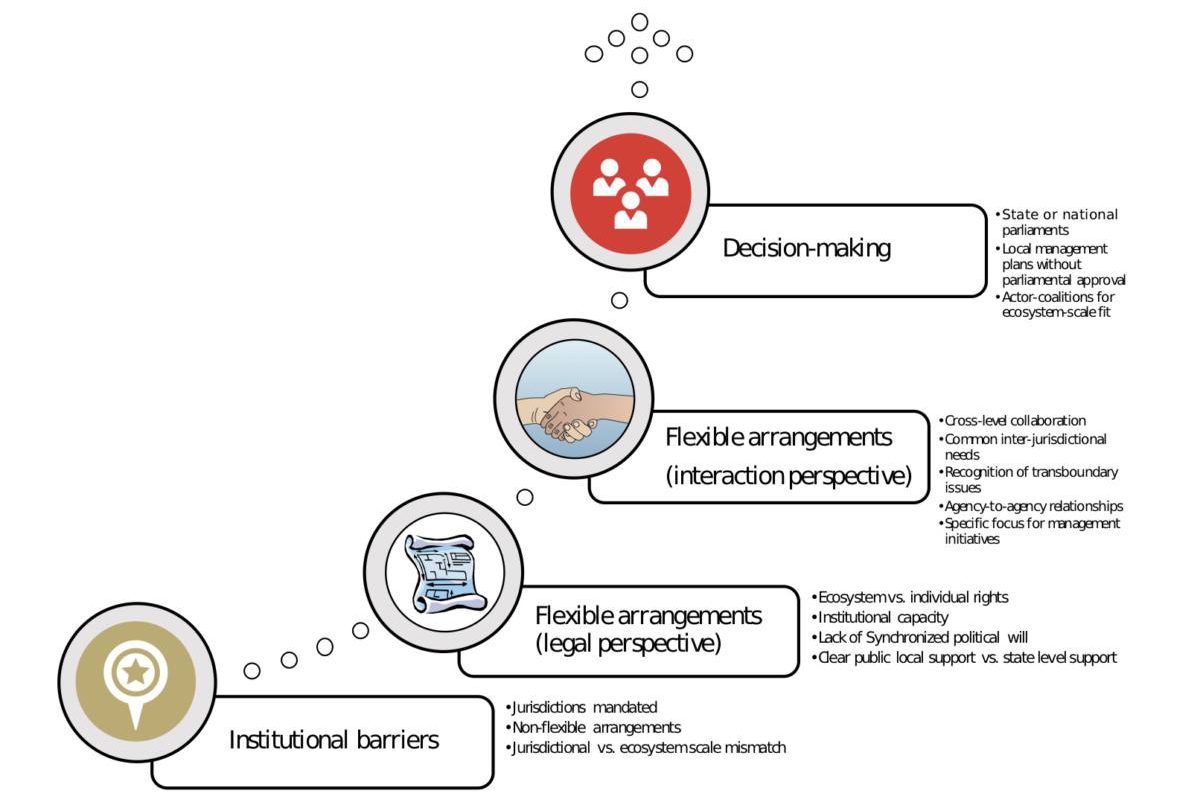Let’s look at political and bureaucratic goals from a different perspective: Opportunities!
In Perth, Western Australia, some of the most beautiful wetlands can be found. The wetlands are one of the most diverse areas and support a wide range of flora and fauna. However, climate change has lead to prolonged droughts and urgent action is required.
When we held workshops with stakeholders to develop adaptive actions we found that each participant had different reasons to implement a measure and that bureaucratic goals originate from fragmented policy and law.
That’s why I took these policy goals as a starting point to discuss adaptation strategies with stakeholders. We asked stakeholders to identify laws and policy that prevent enactment of adaptive actions.
- The institutional framework includes the protection of individual rights of people, but also a common right to the conservation of ecosystems. This leads to conflicting interests when adaption measures are implemented;
- Local level actors are prevented from implementing adaptive management as the jurisdiction is limited by state planning and water policies.
- Some legal barriers can be overcome when local and state departments collaborate to match the jurisdiction with the action to be taken.
The tool
The process from identifying institutional barriers to decision-making to implement adaptive actions is a comprehensive 4-step concept:
- Identify all institutional barriers (= laws and policies)
- Identify (legal) arrangements to overcome institutional barriers
- Identify how stakeholders perceive the flexibility of law and policies
- Combine the information from previous steps to identify which organization takes the final decision
(Source: Nanda et. al 2018)
